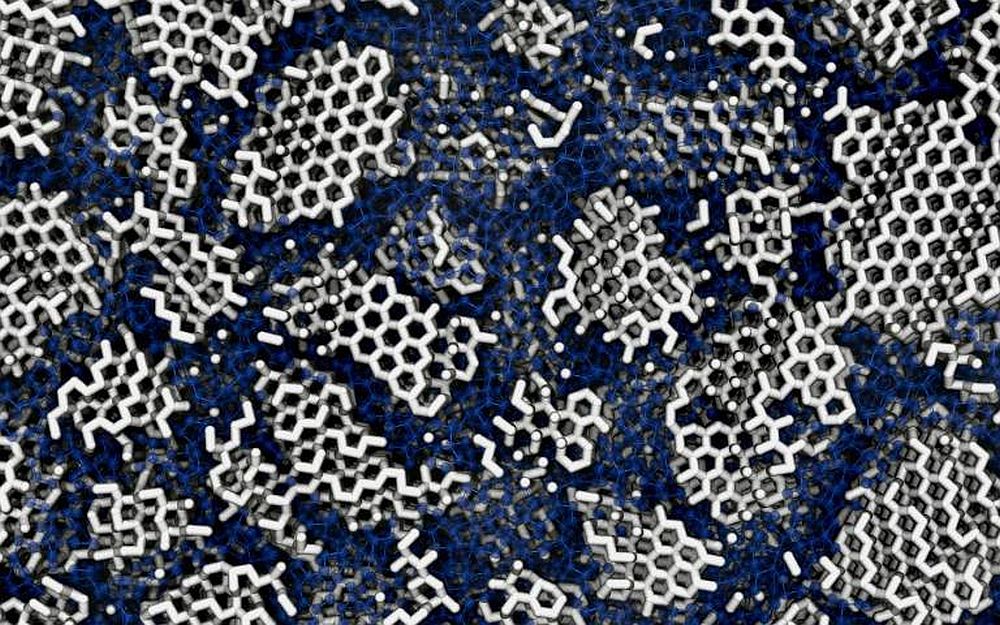
[Image above] In November 2021, hypersonic aircraft startup Hermeus unveiled a nonflying prototype of its Quarterhorse unmanned small-sized vehicle. Ceramic matrix composites are being considered for use in the engines of such vehicles. Credit: Hermeus, Flickr (CC BY 2.0)
Hypersonic jets are under development for military and commercial applications. At speeds of Mach 5, flying from New York City to London would take less than an hour. Hypersonic aircraft startup Hermeus has already tested the engine for its Quarterhorse jet, with plans to start testing a small-scale version by the end of 2022.
Ceramic matrix composites (CMCs) based on silicon carbide and other nonoxides are being considered for such engine components because of their high-temperature strength and toughness, high-thermal conductivity, and low thermal expansion. However, their low oxidation resistance limits their application.
Materials are needed that can withstand oxidative corrosion for long duration flights while maintaining their shape without cracking. Oxide–oxide composites are one solution, especially when based on aluminosilicate matrices like mullite, which has other attractive properties, including
- High-temperature stability,
- Creep resistance,
- Low coefficient of thermal expansion,
- Low thermal conductivity,
- Low dielectric constant,
- Chemical compatibility, and
- Electromagnetic transparency.
However, conventional processing techniques for oxide composites usually require high temperatures and pressures, which damage the oxide fiber and limits the composite’s application to 1,200°C.
To address this issue, researchers from the Indian Space Research Organization and Indian Institute of Space Science and Technology developed a one-step process for synthesizing mullite precursors (aluminosiloxanes), which involves co-hydrolysis and condensation of high-purity aluminum trisecbutoxide and tetraethoxysilane in the presence of concentrated hydrochloric acid in a nonpolar solvent.
Hydrochloric acid allows the rapid hydrolysis of aluminum alkoxide, along with a peptization effect, which prevents the self-condensation of the aluminum alkoxide. The nonpolar solvent improves dispersion and avoids gelling. No additional water is needed during the synthesis.
Low-viscosity, colorless, and transparent resins are formed having Si–O–Al bonds. The resins are then converted into mullite by first heating at 200°C for two hours in an air atmosphere, followed by heating at a rate of 3°C/min to 1,000°C in an oxidation furnace under air flow. This temperature is maintained for three hours. Sintering temperatures for mullite normally range from 1,300°C to 1,600°C, depending on composition.
The research revealed that
- A homogenous distribution of silicon and aluminum helps form mullite at a lower temperature;
- Mullite formation shifts to a lower temperature with an increase in aluminum content in the precursor;
- By adjusting the aluminum/silicon ratio of the precursors, the composition can be controlled between a silica-rich mullite phase and near-stoichiometric mullite phase;
- The ceramic content ranges from 65–80.6 wt.%, a prerequisite for a suitable matrix precursor; and
- Resin viscosity is easily controlled by adjusting how much solvent is evaporated, allowing polymer infiltration and pyrolysis fabrication of composites.
If this process is scaled to production levels, the lower sintering temperature will help prevent fiber damage. And the ability to tailor the ceramic composition makes a wider range of applications possible for hypersonic engines.
The paper, published in Ceramics International, is “Low temperature mullite forming pre-ceramic resins of high ceramic yield for oxide matrix composites” (DOI: 10.1016/j.ceramint.2022.03.113).
Author
Laurel Sheppard
CTT Categories
- Aeronautics & Space


